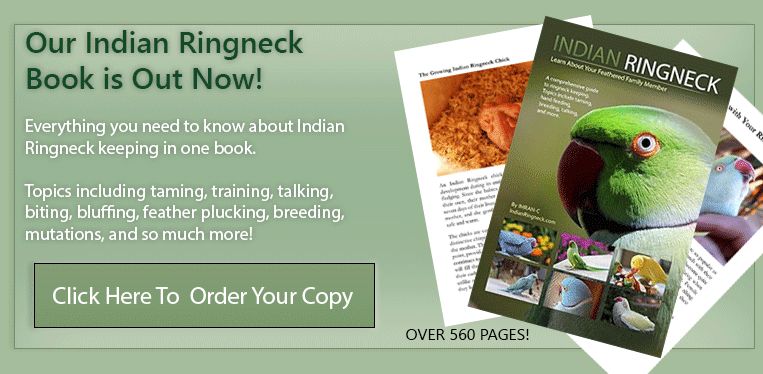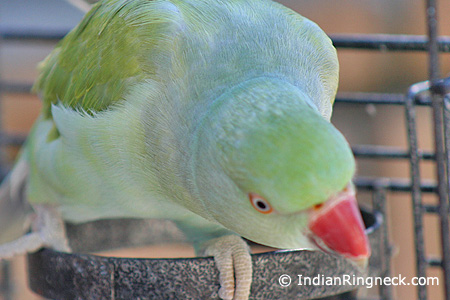

Choosing the right cage is crucial for ensuring a happy and healthy life for your Indian Ringneck. These birds are highly active and playful, so their cage must not only accommodate their energy but also be easy to clean and disassemble for regular maintenance. The cage should comfortably house your parrot, along with various perches and toys, while being both durable and safe, as Indian Ringnecks can live many years.
When selecting a cage, it is important to take the bird’s tail into account. The cage should be as spacious as possible, based on your budget and available space, since Indian Ringnecks thrive in roomy enclosures. They enjoy being able to turn around, flap their wings, hop between perches, and play with toys without touching the cage bars.
A quality cage will also feature doors that provide easy access for both you and your bird. This is especially important when retrieving your parrot, as it minimizes stress, particularly for birds that were not hand-fed. Ideally, the cage should have at least three doors—two for food and water dishes, and one as the main entrance. Most cages come with clips that securely hold the bowls in place to prevent movement.
Perch placement inside the cage is another key factor. Perches should not be located above food or water dishes to avoid contamination. It’s important to arrange the perches and toys in such a way that the bird cannot soil them with droppings. Additionally, perches should vary in size, as perches of uniform diameter do not provide proper exercise for a parrot’s feet. Natural eucalyptus branches make excellent perches, but they must be cleaned thoroughly to remove any pesticides or bacteria. Other tree branches can be used as well, but it is essential to ensure they are non-toxic. Indian Ringnecks are natural chewers, so all cage materials should be bird-safe.
There are many other perch options available, such as ropes, swings, and clip-on perches. Since ringnecks are highly active, they may even use food trays as perches. It’s important to avoid overcrowding the cage with toys. Instead, rotate toys weekly to keep your bird engaged and prevent boredom. Toys should be kept above the perch line to avoid becoming soiled.
A tray at the bottom of the cage is also necessary to collect waste, such as seed husks, fruits, and vegetables. The tray should be easy to slide out for cleaning. Avoid using materials like cob bedding or wood shavings, as they harbor bacteria if not changed daily. The tray should sit beneath a grill to prevent the bird from coming into contact with debris.
The cage’s material must be safe for parrots, which means it should be coated or sealed with non-toxic paint. Old cages with chipped paint can rust, causing metal poisoning in your parrot. Brass cages should be avoided as they often contain toxic zinc. Newer cages made from stainless steel or powder-coated bars offer a safer alternative.
By following these guidelines, you can ensure your Indian Ringneck has a safe and suitable environment to thrive in. Investing in a high-quality cage from the start will save you from needing to replace it later, while providing your bird with a secure, healthy home for its entire life.